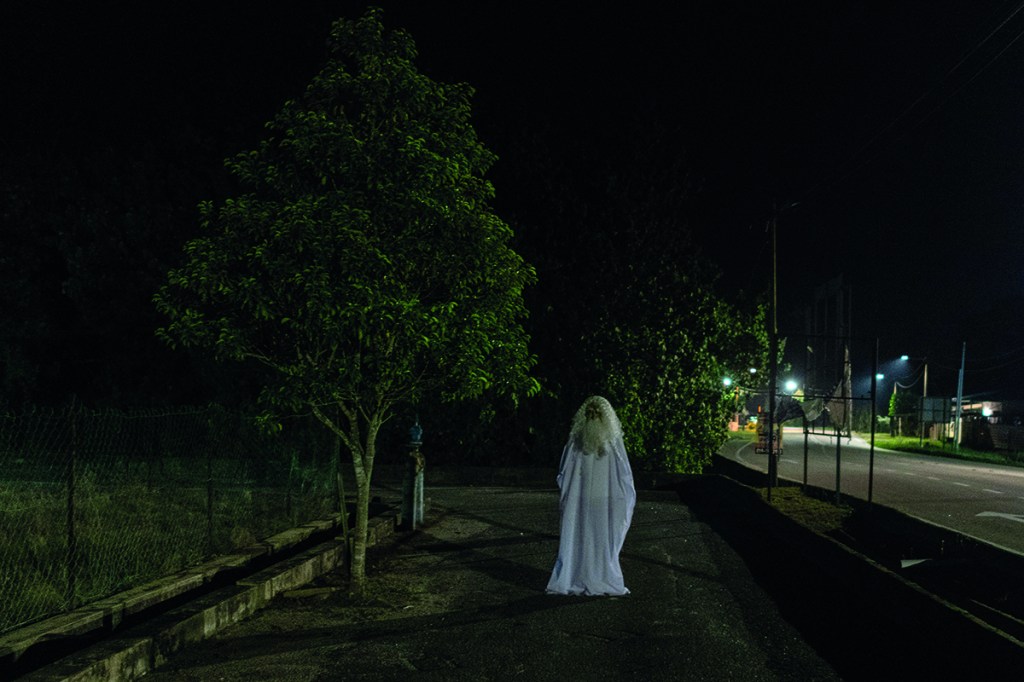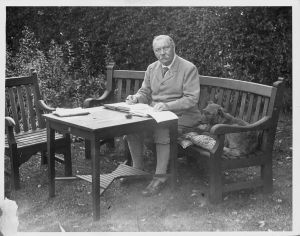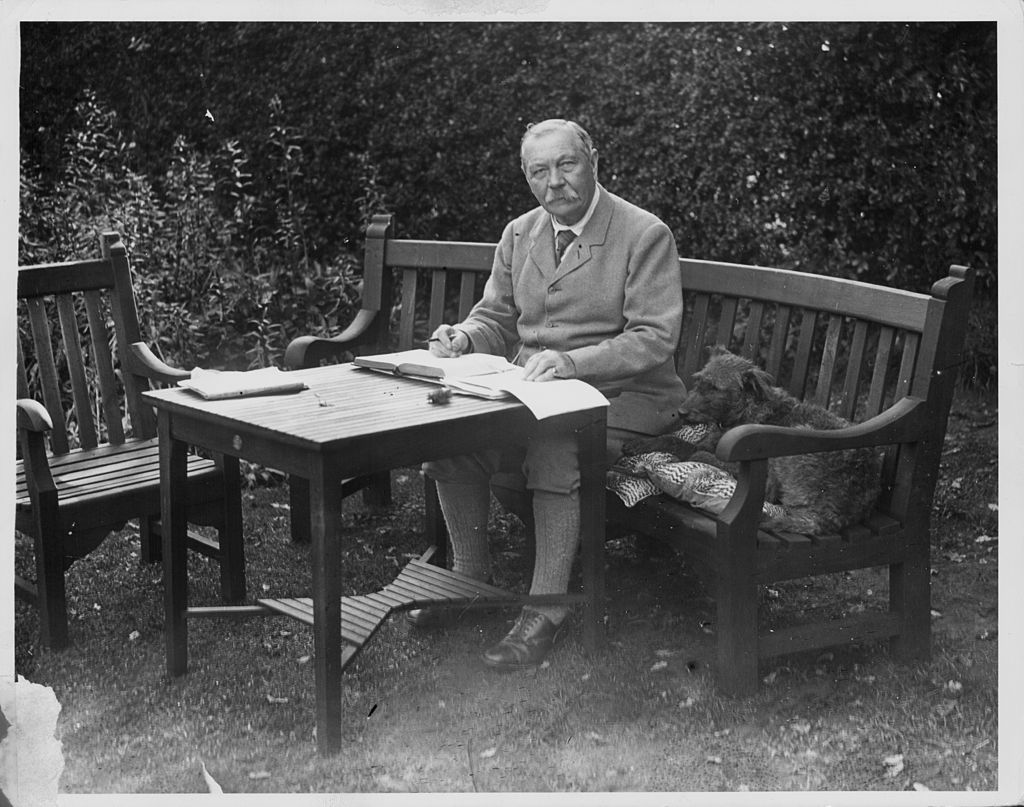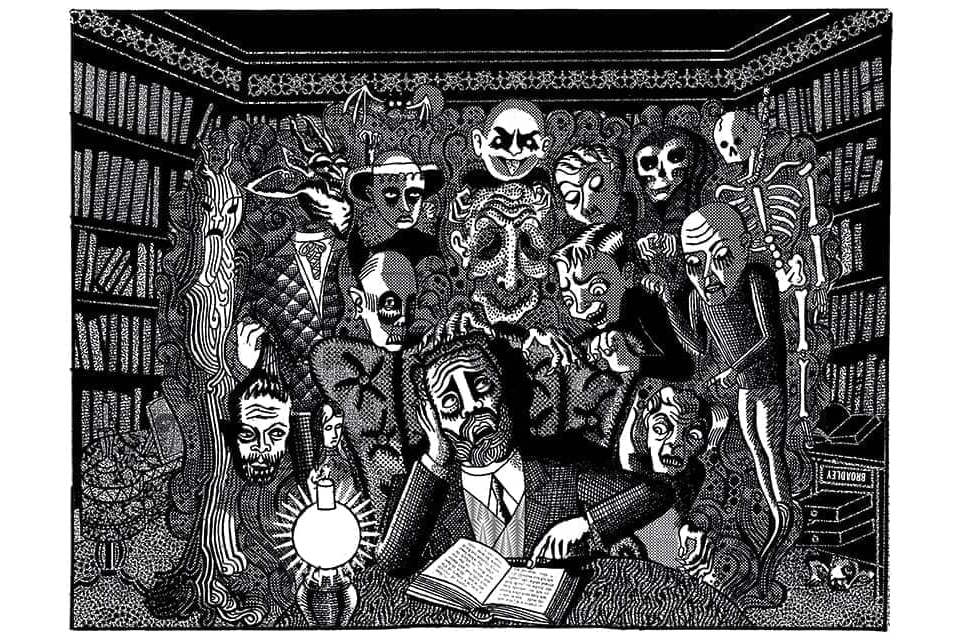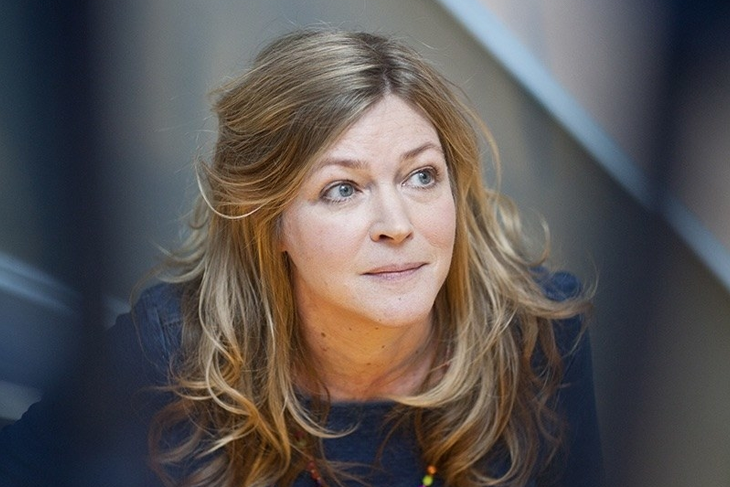This is a paranormal book — by which I mean it exists in a truly out of the ordinary netherworld of amiable smut and arch silliness not normally associated with titles reviewed in these pages. But hold on, there is a point — which I’ll come to later.
‘Perhaps Wakdjunkaga was really Gef the Talking Mongoose.’ I read this amazing sentence and was about to throw the book across the room, but then I realized that a flying paperback might, if S.D. Tucker were to see it, be interpreted as evidence for the existence of poltergeists (from the German for ‘noisy spirits’).
So I read on resignedly until my wife interrupted me and said: ‘That looks self-published.’ She is a designer. ‘One thing I’d recommend to any publisher is, if using black-and-white photography, always choose a high-contrast image,’ she continued, flicking through the pages. The repro in Blithe Spirits makes everyone look like a gray lady.
With an energy as irrepressible as the most violent and noisy haunting, Tucker, who has something of a fixation with excrement (an entire chapter is dedicated to ‘Toilet Humor’), rambles on and on. There is as little evidence of his book being either designed or edited as there is of the haunting of Epworth Rectory, where the bored Methodist Wesley family attributed the creaking of an old building to ghostly presences. Indeed, Tucker brings the concept of ‘lazy repetition’ into disrepute.
‘We have already mentioned Janet shitting in the sink in Enfield,’ he writes. Too true. Janet’s undisciplined defecation is a memorable leitmotif. Blithe Spirits really is an astonishingly bad book, and therefore extremely entertaining. We learn, for example, that while the science of Newton and Einstein is taught at Stanford, Cambridge and Munich, poltergeists are best studied in Enfield, Pontefract and Thornton Heath — or the factory in Gateshead, near Newcastle, where horny-handed Geordies were frightened by toilets which flushed uncommanded. Plumbing appears to play a central role in the poltergeist phenomenon: a Mrs Sparks of Southend had to self-isolate in a motel when a poltergeist began using her lavatory.
There are many treasures hidden here, though. I am especially pleased to know more about lithobolic missiles: these are stones which fly hither and yon of their own accord. When not preoccupied with flushing lavatories, poltergeists express themselves by hurling rocks. And I am also grateful to Tucker for inspiring me to google ‘Increase Mather’, a Puritan monster who invigilated the Salem witch trials and was an early president of Harvard. Mather had experienced lithobolic problems of his own — something I’m inclined to attribute to sexual repression.
This lunatic world soon becomes very engaging. A television in Bridgeport, Connecticut levitates. Hermes, god of thieves and travel, descends from Olympus and enters a house in Manchester through the keyhole. Here he creates an internal weather system which rained upwards. In Enfield — a London suburb evidently popular with poltergeists and their watchers — people often pass through walls. When flickering lights are observed at a supermarket in Crawley, another London suburb, the problem is not identified as a question of irregular power supply but of a haunting near the cheese and yoghurt aisle. Back in Enfield again, there is a spirit who likes to say ‘Fuck off’ and wonders why girls have periods.
[special_offer]
But there is the ghost of a proper subject here. Nocturnal knockings, if not auto-flushing lavatories, are known in all cultures. Arthur Conan Doyle enjoyed a good séance; Jung was susceptible to ghosts; William James was a pioneer in psychical research; W.B. Yeats’s wife, Georgie Hyde-Lees, was a medium; and Sacheverell Sitwell wrote a little book on poltergeists in 1959. More recently, Lewis Hyde’s study of tricksters — legitimate cultural anthropology — has informed Blithe Spirits.
Indeed, Tucker cannot be criticized for lack of sources: he cites Ronsard, Duchamp and Dalí, as well as giving a moment in the sun to ‘the controversial theorizer Stan Gooch’. We skeptics may see poltergeists as a cognitive response among the credulous to ambiguous signs. Is that stain above the kitchen sink an image of the Virgin Mary? Or is it perhaps a careless splash of extra virgin olive oil? One thing the poltergeist phenomenon makes quite clear is the human appetite for mystery.
Blithe Spirits works at several levels, none of them very high. To describe this book as unintentional comic genius would perhaps be over-generous, but personally I was happy to get away from the fact-based universe of Descartes and McKinsey, and from flygskam and viruses — even if it is an escape to deranged anecdotalism and lavatory jokes.



